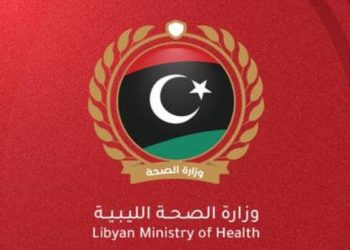By Sami Zaptia.
London, 26 September 2018:
As a number of conflicting and simultaneous narratives emerge, more news is emerging of the different possible reasons for the sudden lull in Tripoli’s militia war.
It was believed that both the Tarhuna-based 7th Infantry Kani Brigade and the Salah Badi Somoud brigade ceased hostilities purely out of fear of the possible unspecified and specified repercussions by the international community.
These included threats of being named by UNSMIL, as it finally did with Salah Badi and Abdelghani al-Kikli “Ghnewa”. Another was possible UN Security Council sanctions.
However, this explanation is too simplistic, as a different narrative (or narratives) may be emerging which does not cast the decision to ceasefire by the 7th Infantry Kani Brigade and the Salah Badi Somoud brigade purely as a defensive one.
On a practical level, it was believed that Badi’s Somoud withdrew from one of its south Tripoli locations, the Airport road Naqliya barracks, due to a lack of ammunition. He was accused of using it to bombard Ghnewa’s forces in Tripoli.
It was also believed that Badi’s calls for support in the form of weapons and manpower were turned down by Misrata under pressure from UNSMIL and the international community. This, after some Misrata militias had threatened to join the battle in order to “cleans Tripoli” from its own corrupt militias.
The Tarhuna-based 7th Infantry Kani Brigade also agreed to withdraw to the Gaser Ben Ghasheer area of Tripoli International Airport to respect the UNSMIL-brokered Zawia ceasefire.
However, the motivation for the possible allies of Badi, including from the city of Misrata, to refrain from providing him with support seem to be strategic and could be temporary.
Indeed they could be considered a political gain rather than withdrawal and a defeat.
Sources have revealed that rather than end the Tripoli militia fighting indefinitely, the anti-Tripoli militia coalition (for want of a better phrase) have granted Ghassan Salame’s UNSMIL, the international community and the ineffective Faiez Serraj administration a stay of execution.
They have agreed to temporarily halt the fighting for “a few months” (thought to be three months) to allow Salame time to implement the new Tripoli Security Arrangements. Some sources suggest this time-frame was negotiated with him or thàt he even asked for it.
On the other hand, and on another front, a peace accord was agreed between Soug il Juma and Tajura local councils which de-escalated tension between the Serraj aligned milita of Abdelrauf Kara, the Special Deterrence Force (RADA/SDF), and that of the more extremist (some would say Jihadi) militia of Bashir Khalfalla (aka “Bugra” or the cow) and his 33rd Infantry Brigade.
It will be recalled that Bugra had attacked Mitiga airport back in January this year in an attempt to release some of his imprisoned allies. Some of these have been labelled as extremists.
The Mitiga attack failed and more of Bugra’s allies were captured and imprisoned in Mitiga by Kara. The Serraj government subsequently withdrew recognition of Bugra and his 33rd Infantry Brigade.
As a result, Bugra has been, ever since, agitating and threatening to relaunch another attack on the Mitiga prison in order to free his allies.
Bugra had threatened to launch an all-out attack on the Mitiga complex which besides being Tripoli’s only functioning airport, acts as the HQ for RADA/SDF and more importantly houses the prison controlled by RADA/SDF.
This prison holds many what are referred to as ISIS/DAESH, extremist or terrorist prisoners. They include supporters of Bugra. Taking advantage of Tripoli’s militia war, Bugra had wanted to attack the Mitiga prison and release them after Kara had consistently refused to release them.
To partially defuse this grievance, the Faiez Serraj Presidency Council and Government of National Accord has decreed (1304/2018) that all prisoners awaiting trail and have passed the legal period beyond their possible sentence are to be released. At the time of writing 83 were released. It is not clear how many of these are allies of Bugra.
Indeed some prisoners were released, including supporters of Bugra. However, there are conflicting narratives on this.
Some say that only low-level criminals were released as a peace gesture to Bugra and his mediating Tajura local council and that no terrorist-level criminals were released. Others say some highet level prisoners were released to buy a ceasefire and peace for Tripoli.
Whatever the narrative is, if one narrative can ever explain Libya’s complex and multi-motivated behind-the-scene negotiations, there indeed seems to be a lull in the Tripoli fighting. The true price for this lull or ceasefire will only become apparent over time.
What has come out of negotiations and the Tripoli militia war crisis is that some Greater Tripolitania-based cities, tribes and militias now want Tripoli to be the capital of all Libya and for all Libyans.
Having been pushed out of Tripoli in a series of events and clashes since the end of the 2011 February Revolution, these cities, tribes and militias feel (with some justification) they have been marginalised and prevented from access to the capital and its levers of power and rentier wealth.
Hence, it seems that the quid pro quo for the lull in militia fighting is not a shortage of ammunition or fighters, or in political or ideological will – but a change in the status quo.
The anti-Tripoli militia coalition want a real and a permanent change in the Tripoli status quo. They want an implementation of the recently announced economic reforms, and an implementation of the new Tripoli Security Arrangements which entail some sort of DDR (breakup) of the Tripoli militias and the the removal of all weapons from the capital, as stipulated by the 2015 Shkirat Libyan Political Agreement (LPA).
This would also entail the formation of some sort of non-militia based police and army to guard the capital.
This force would be under the control of the internationally-recognized Tripoli government rather than the present case of the Serraj government being under the control of Tripoli’s main four militias of RADA/SDF, the Tripoli Revolutionary Brigade, Ghnewa and Nawasi.
Time will tell if Serraj and UNSMIL will be able to make any real change. Time will also tell if the ineffective Serraj and his PC/GNA survives the crisis.
The crisis may make it easier for the House of Representatives and the High State Council to agree on the much-discussed slimmer Presidency Council.
Serraj, his PC/GNA and UNSMIL had failed miserably since the signing of the 2015 Skhirat LPA to achieve any meaningful traction in the security sector.
What is clear is that the Tripoli militia fighting has forced a crisis and some new thinking and impetus on decision-makers.
Ironically, Badi’s short-term attempt to act as a spoiler of the Zawia ceasefire could in the long run be a positive thing. It could force UNSMIL to finally stop sidestepping the elephant in the room: what to do with Tripoli’s and Libya’s militias.
It could force UNSMIL into realising that a state needs a monopoly on the legitimate use of force in order to implement any of its policies and impose peace and order.
There can be no progress and development in Libya if there is no safety and security. There can be no economic reform, no electricity, no improved health and education – if there is no stability, law and order.
Stability and law and order need a non-militia-based, legitimate, politically accountable police and army.
https://www.libyaherald.com/2018/04/24/serraj-condemns-indiscriminate-attack-on-mitiga-airport/
https://www.libyaherald.com/2018/01/23/rada-arrests-61-connected-with-mitiga-airport-attack/
https://www.libyaherald.com/2018/01/15/pc-declares-local-state-of-emergency-as-maetiga-airport-is-attacked-by-pro-terrorist-militia/







